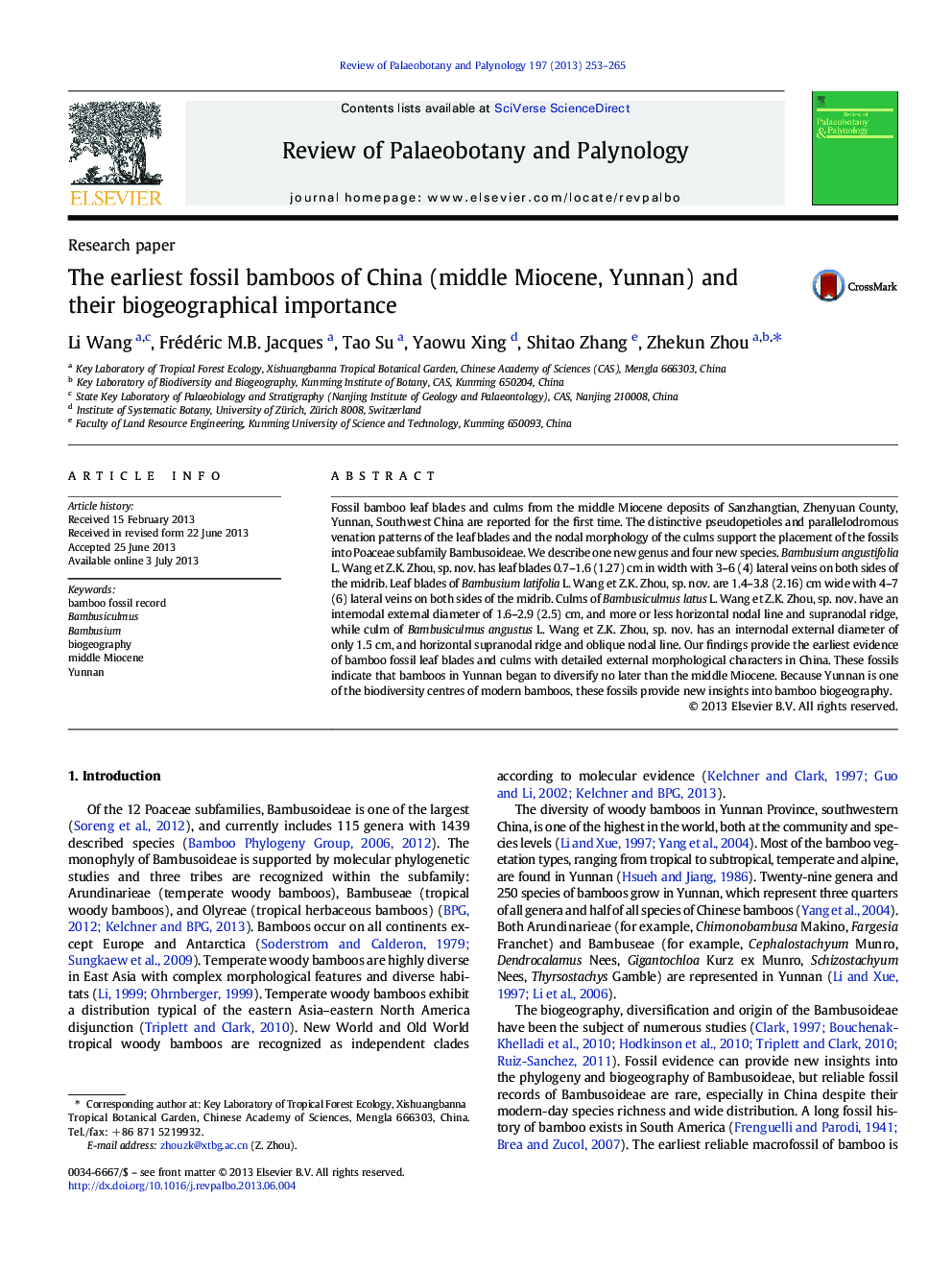| Article ID | Journal | Published Year | Pages | File Type |
|---|---|---|---|---|
| 6448766 | Review of Palaeobotany and Palynology | 2013 | 13 Pages |
Abstract
Fossil bamboo leaf blades and culms from the middle Miocene deposits of Sanzhangtian, Zhenyuan County, Yunnan, Southwest China are reported for the first time. The distinctive pseudopetioles and parallelodromous venation patterns of the leaf blades and the nodal morphology of the culms support the placement of the fossils into Poaceae subfamily Bambusoideae. We describe one new genus and four new species. Bambusium angustifolia L. Wang et Z.K. Zhou, sp. nov. has leaf blades 0.7-1.6 (1.27) cm in width with 3-6 (4) lateral veins on both sides of the midrib. Leaf blades of Bambusium latifolia L. Wang et Z.K. Zhou, sp. nov. are 1.4-3.8 (2.16) cm wide with 4-7 (6) lateral veins on both sides of the midrib. Culms of Bambusiculmus latus L. Wang et Z.K. Zhou, sp. nov. have an internodal external diameter of 1.6-2.9 (2.5) cm, and more or less horizontal nodal line and supranodal ridge, while culm of Bambusiculmus angustus L. Wang et Z.K. Zhou, sp. nov. has an internodal external diameter of only 1.5Â cm, and horizontal supranodal ridge and oblique nodal line. Our findings provide the earliest evidence of bamboo fossil leaf blades and culms with detailed external morphological characters in China. These fossils indicate that bamboos in Yunnan began to diversify no later than the middle Miocene. Because Yunnan is one of the biodiversity centres of modern bamboos, these fossils provide new insights into bamboo biogeography.
Keywords
Related Topics
Physical Sciences and Engineering
Earth and Planetary Sciences
Palaeontology
Authors
Li Wang, Frédéric M.B. Jacques, Tao Su, Yaowu Xing, Shitao Zhang, Zhekun Zhou,
